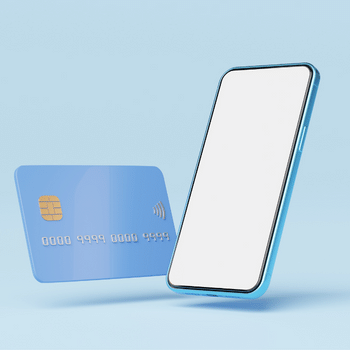Virtual credit cards: how they work and why they're safer
 When talking about online shopping, it’s clear there are many fears surrounding the process – and one of the most common is the cloning of credit (or debit) cards in a virtual scam. After all, with the rise of online shopping, cybercriminals are increasingly committed to defrauding unsuspecting Internet users. You may also come across a fake store, which perfectly simulates the website of a famous retailer, or simply fall victim to data leaks.
When talking about online shopping, it’s clear there are many fears surrounding the process – and one of the most common is the cloning of credit (or debit) cards in a virtual scam. After all, with the rise of online shopping, cybercriminals are increasingly committed to defrauding unsuspecting Internet users. You may also come across a fake store, which perfectly simulates the website of a famous retailer, or simply fall victim to data leaks.
Just imagine: after carefully studying the product you want, you find it on sale in an online store that seems to be dependable. You make the purchase using your credit card and, a few minutes later, several random purchases begin to appear in the notifications from your banking app – it’s only then that you realize that you’ve fallen into a trap. Sometimes it’s possible to contest fraudulent transactions with your bank, but, even if you are successful, the process is not at all easy.
What many people don’t know is that most financial institutions already offer a useful feature to guarantee a higher level of security when buying online. We’re talking about virtual cards, designed exclusively for acquisitions from online stores and which can be generated and deleted at any time. It’s a faster, more practical and flexible way to shop and certainly the best alternative in terms of security.
So, how do they work?
It’s very simple. After opening a bank account, you’ll usually receive a physical card at home, which is and always will be your main card (also used for drawing cash from ATMs and making in-person purchases through card machines in most brick-and-mortar commercial establishments). However, using your banking app, you can also create a virtual card, which can only be used for online shopping. There is no actual physical card, instead, it is made up solely of a number, expiry date and verification code.
Most virtual cards issued nowadays can be customized and deleted according to user needs. Let’s imagine you don’t mind “taking a chance” and make a purchase to the sum of US$ 399 from an online store that doesn’t seem all that trustworthy. You can simply generate a virtual card specifically for this transaction, define your limit at exactly US$ 399 and then, once done, you can delete the card to prevent any type of malicious use. Some banks allow you to generate and delete as many cards as you please!
It doesn’t matter if the store is fraudulent or if that card ends up being exposed through a data leak later on: it will no longer be of any use to cybercriminals, as the spending limit has already been reached or it has been invalidated. It is precisely thanks to this flexibility that virtual cards are especially perfect for online shopping.
Care measures to adopt
As previously mentioned, despite being considered “something new”, virtual cards are already offered by most financial institutions, both the traditional (big banks) and fintechs (with operations 100% online). And, despite being really easy to use, it is important to reiterate that security still depends on end users adopting good safety habits, who must always remember to delete the virtual card after completing the purchases for which the card was created.
It’s no use creating a virtual card and then maintaining it indefinitely, using it for several online stores and failing to set spending limits for transactions. Enjoy the fact that this resource is offered free of charge and don’t be afraid of “burning through” virtual cards for single online purchases, deleting them immediately after use.
Article originally written in Portuguese by Perallis Security Content Team: Cartões de crédito virtuais: como funcionam e por que são mais seguros — Perallis Security
